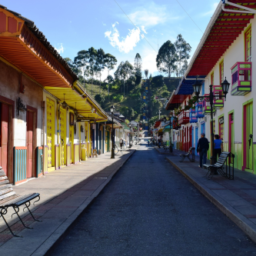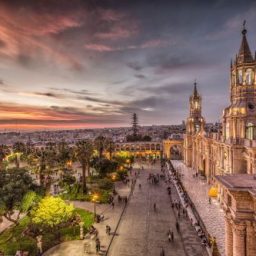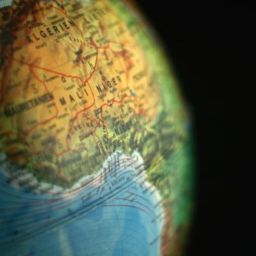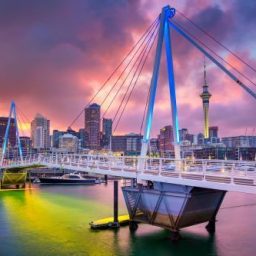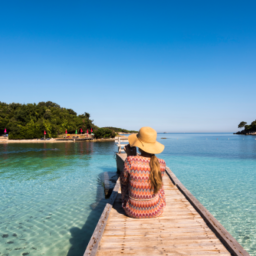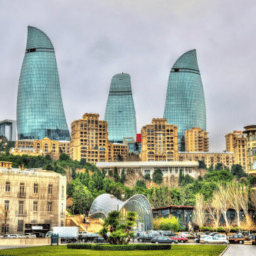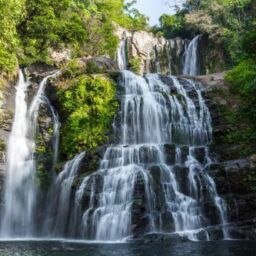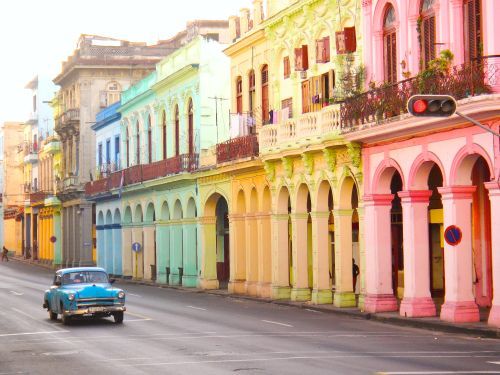

Cuba is a country with a rich history and culture, as well as unique traditions and customs. It has always been associated with revolutionary changes and the fight for freedom. Since Fidel Castro and his comrades seized power in Cuba in 1959, the country has become a symbol of socialism and revolution. Today, Cuba still lives in the shadow of its turbulent past and tries to cope with various challenges.
However, this article is not only information about the language spoken in Cuba. We also present the most important information about the country itself, its history, politics, and culture, and everything you need to know before travelling there. Read on!
Contents
Cuba – a handful of information
An island nation located in the Caribbean Sea, it consists of a main island called Cuba, like the country itself, and an archipelago of islands and smaller islets. Cuba is the third-largest island in Latin America and has an area of about 109,000 km². Due to its location on the sea, it does not border any country. The capital of Cuba is Havana, also called La Habana in Spanish. Havana is the largest city in Cuba, as well as one of the most important cultural and economic centres in Latin America.
Cuba is also characterized by a rich culture that combines Spanish, African, and indigenous influences. Cuban music, dance, and cuisine are world-famous and an important part of Latin American culture. Surely everyone has at least heard of salsa, mambo, or cha-cha. Cuban dancers are also widely known as champions of numerous international festivals.
Geography of Cuba
Cuba’s main island is approximately 1,200 km long and covers an area of approximately 109,884 km². The terrain of the island is mountainous, with the Sierra Maestra mountain range to the east and the Cordillera de los Organos to the west. Cuba’s highest peak is Pico Turquino, rising to 1,974 meters above sea level.
More than 200 rivers flow through the main island, but their total length does not exceed 2,500 km. The largest of these is the Rio Cauto, which flows from the Cordillera de los Organos through the central and eastern parts of the country to Guacanayabo Bay on the southern coast.
The Cuban coast hosts an abundance of beaches that attract tourists from all over the world. The most famous are in Varadero, Cayo Largo del Sur and on the Hicacos Peninsula. The water in the Caribbean Sea around Cuba is turquoise and warm for most of the year, thanks to the pleasant tropical climate, which is great not only for relaxation, but also for agriculture. The temperature in the country rarely drops below 20 °C, and the rainy season last usually from May to October.
Political system
Cuba is a socialist state ruled by a one-party political system. Power in Cuba is exercised by the Communist Party of Cuba (Partido Comunista de Cuba, PCC), the only legal political party in the country, through the National Assembly of People’s Power. The Council consists of 31 people and is headed by the Chairman of the State Council.
Cuba is one of the last countries where the socialist system is still maintained. The Cuban political and economic system was established after the 1959 revolution that overthrew the dictator Fulgencio Batista. From then on, Cuba was ruled by Fidel Castro, and then by his brother Raul Castro, who introduced a socialist system and a state monopoly on the economy on the island.
Under this system, the state controls most branches of the economy, including industry, transportation, medicine, education, and the media. The Cuban Constitution of 2019 established that the state is the owner of land, water, forests, and other natural resources. In practice, this means that private enterprise is limited, and the government controls most economic sectors.
At the same time, there are independent social organizations and opposition groups in Cuba that are demanding more freedom and political reform. However, the activities of these groups are strictly controlled and often suppressed by the government.
Administrative division
Cuba is divided into 15 provinces and one special administrative district for the capital (Ciudad de La Habana), which has a status equivalent to the provinces. Provinces are further subdivided into municipalities (municipios).
The provinces of Cuba are Pinar del Río, Artemisa, La Habana, Mayabeque, Matanzas, Cienfuegos, Villa Clara, Sancti Spíritus, Ciego de Ávila, Camagüey, Las Tunas, Holguín, Granma, Santiago de Cuba, and Guantánamo.
Economy
The Cuban economy is dominated by industry, especially centred around sugar, light, and heavy manufacturing, as well as tourism. For years, the country was dependent on economic aid from the USSR, which was their main trading partner and investor on the island. After the collapse of the Soviet Union, the Cuban economy was in a dire situation, which resulted in economic hardships and food shortages.
For years, the government has been introducing reforms aimed at improving the efficiency of the economy, including facilitating foreign investment and introducing some elements of the free market. However, while they have had some positive effects, there are still economic problems such as shortages of food and everyday goods, as well as a lack of foreign capital needed to modernize infrastructure and the industrial sector. In addition, due to the economic embargo imposed on Cuba by the United States, the Cuban economy continues to experience difficulties in international trade.
Brief history
The history of Cuba dates back to pre-Columbian times, when the island was inhabited by Indians. In 1492, Cuba was discovered by Columbus, and in 1511 it became a Spanish colony. From then, Cuba was controlled by Spain until 1898, when America gained control of Cuba as a result of the Spanish–American War. In 1902, Cuba declared independence, but in practice the country was still under the control of the United States.
In 1959, the Cuban Revolution led by Fidel Castro and his comrades overthrew the regime of President Fulgencio Batista and took over the power. Since then, Cuba became a socialist state and became associated with the Soviet bloc. In the 1960s and 1970s, Cuba was involved in various conflicts around the world, sending troops and advisers to other socialist states.
In the 1990s, Cuba experienced an economic crisis resulting from the dissolution of the Soviet Union, which was the country’s main trading partner. Over the past few years, Cuba has been trying to liberalize its economy, but still faces difficulties stemming from trade restrictions and international sanctions.
Spanish language in Cuba
The official language in Cuba is Spanish. It is a language that was introduced by the Spaniards during the colonization of Cuba and has remained the main language spoken on the island ever since. There are also linguistic minorities in Cuba, such as the Caribbean language, but these are not used in official documents or in public life.
It should be noted, however, that the language spoken in Cuba is different from standard Spanish. Cuban Spanish has its own words, phrases, and accent that are different from other varieties of Spanish.
The Afro-Cuban and Creole influences in the Spanish language are very visible in Cuba, as many words and phrases have been introduced into it that come from African languages and Creole languages. In addition, in Cuban Spanish, as in other varieties of Spanish, there are also many words of Arabic, Hebrew, Anglo-Saxon, French, and Italian origin.
However, despite these differences, the Cuban variety is still considered easy to understand by Spanish-speaking visitors from other countries.
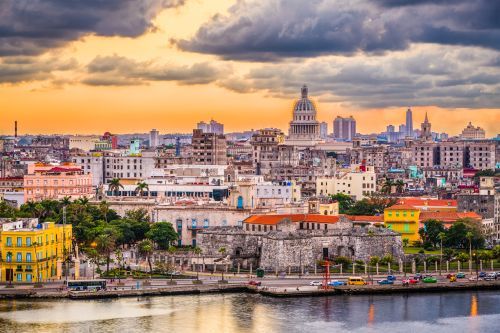

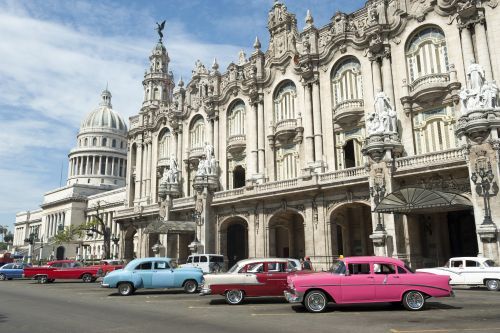
Foreign languages in Cuba
The level of foreign language proficiency in Cuba is relatively low compared to other countries. According to data from 2020, only about 4% of Cubans declare that they speak foreign languages at an advanced or fluent level. The most learned foreign languages are English and French, but their proficiency is still limited.
One of the reasons for such state of affairs in Cuba is that, until recently, access to foreign sources of information and education was very limited due to state policy. However, in places frequented by tourists, there is a good chance that English will prove effective in basic communication.
Basic Spanish phrases
Basic phrases will come in handy not only in Cuba, but also in many other South American countries and in Spain itself. Their knowledge will make you feel more confident when travelling in Latin America and Europe.
Sí – Yes
No – No
Tal vez – Maybe
Por favor – Please
Gracias – Thank you
Está bien – That’s ok
Muchas gracias – Thanks a lot
Disculpe – Excuse me
Lo sé – I know
No lo sé – I don’t know
Comprendo – I understand
No comprendo – I don’t understand
Perdón – I’m sorry
¿Hablas español? – Do you speak Spanish?
No hablo español – I don’t speak Spanish
¿Podría, por favor, repetir eso? – Can you repeat?
Polite phrases
De nada – Please
No tiene importancia – Don’t mention it
No pasa nada – You’re welcome
Greetings and Goodbyes
Hola – Hello
Buenas – Hi
Buenos días – Good Morning
Buenas tardes – Good Evening
Adiós – Goodbye
Buenas noches – Goodnight
¡Nos vemos! – See you!
¡Hasta luego! – See you later!
¡Qué tengas un buen día! – Have a nice day!
Signs in public places
Entrada – Entrance
Salida – Exit
Salida de emergencia – Emergency exit
Empujar – Push
Tirar – Pull
Aseos – Toilets
Caballeros – Gentlemen
Señoras – Ladies
Libre – Free
Ocupado – Occupied
Fuera de servicio – Out of service
No fumar – No smoking
Privado – Private
No pasar – No entrance
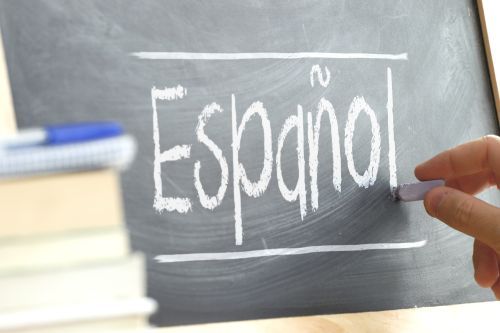

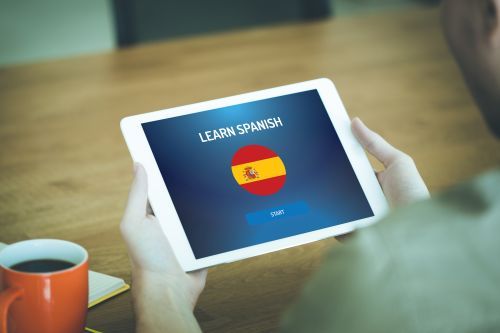
Tourist attractions in Cuba
Cuba is a country that offers many tourist attractions, from beautiful beaches and the Caribbean climate to monuments related to the history of the Cuban Revolution and the culture of the island.
Below are some of the most important tourist attractions in Cuba:
- Havana – the capital of Cuba is a city full of life and culture, famous for its monuments of colonial architecture, colourful streets with antique cars.
- Trinidada – a beautiful town in the south of Cuba, inscribed on the UNESCO World Heritage List.
- Varadero – is a resort town that is famous for its beautiful beaches and crystal clear waters – the perfect place to relax and unwind.
- Viñales Valley – located in the west of Cuba, it is an area protected by UNESCO due to its unique landscapes, traditional buildings, and tobacco plantations.
- Santiago de Cuba – the second-largest city in Cuba, famous for its Afro-Cuban culture, music, and dance.
- Playa Girón – This is where the Bay of Pigs invasion took place in 1961, but today it attracts tourists thanks to its beautiful beaches and rich history.
- Cienfuegos – a port city, known as the “Pearl of the South”, famous for its colonial architecture and beautiful bay
Travelling around the country – useful information for visitors
Time for a few pieces of practical advice which will surely prove useful for planning and during your trip around Cuba.
General entry requirements
To be able to enter Cuba, you must have a valid visa or a tourist card (tarjeta de turista), a special document issued only for tourist purposes. In addition, visitors are subject to certain restrictions:
- When crossing the border of Cuba, it is recommended that your passport be valid for at least 3 months from the intended date of entry, and that you must have a return or continuation ticket.
- A tourist with a visa may still be required to complete the Tarjeta Internacional de Embarque y Desembarque form before passport control, and once you receive the stamped form, keep it as you will not be able to leave Cuba without it.
- Third-country nationals who plan to fly to Cuba from the US are not allowed to cross the border if they do not qualify for one of the twelve permitted categories, as international tourism is not allowed under the current embargo.
- If the stay in Cuba exceeds 30 days, the visa can be extended on the spot at the competent immigration offices of Inmigración y Extranjeria, after prior purchase of stamp duty in the amount of 625 CUP or payment by card 25 USD or the equivalent in another convertible currency. A passport, flight ticket, and proof of accommodation must be presented for inspection.
Local time in Cuba
In Cuba, summer and winter time are used, these are UTC-4 and UTC-5 time zones respectively.
Transit and customs advice
Tourists arriving in an organized group do not need to document their cash, however, tourists arriving individually should have at least the equivalent of USD 100 in another convertible currency for each day of the planned stay. Possession of VISA credit cards is treated as meeting this condition.
Currency and finances
There are two currencies in Cuba that are used by locals and tourists. Residents are paid in Cuban Peso (CUP), while tourists can exchange their currency for Cuban Convertible Peso (CUC), which is equal in value to the US Dollar. It’s important to note that Cuban Convertible Pesos cannot be taken out of the country, so it’s a good idea to only carry what you need and spend it before you leave.
Insurance
Possession of a valid insurance policy against accidents and medical expenses is required, and its absence may result in refusal of entry to Cuba. Before travelling, make sure that the selected insurance company has a representative authorized to operate in Latin America and the Caribbean, and with which Cuban institution it cooperates.
Health and vaccinations
From May to November, there is a risk of dengue in Cuba due to high temperatures, humidity, and tropical storms, which favour the reproduction of mosquitoes. There are also cases of cholera infection in this country. It is recommended to follow the rules of tropical hygiene and to carry out appropriate vaccinations. The threat also occurs in the form of amoebiasis, viral conjunctivitis, and less often Chikungunya fever. Persons with cardiovascular disease should consult a physician before travelling, and persons with a pacemaker should consult a medical specialist. Not all travel agencies provide medical care, and the prices of medicines and medical services are high.
Public transport
The following forms of public transport are available in Cuba:
- Buses – public transport buses and long-distance tourist buses run in and between larger cities.
- Taxis – in Cuba, there are taxis or shared taxis, which are usually cheaper than private taxis. They often run on specific routes, e.g. from the airport to the hotel.
- Trains – Rail is another form of public transport in Cuba, although it is not as developed as buses. In larger cities, city trains run, as well as long-distance tourist trains.
- Trolleybuses – In some major cities, such as Havana and Santiago de Cuba, there are trolleybuses.
- Rickshaws – in some towns, you can use the services of rickshaws, i.e. three-wheeled bicycles with a built-in seat.
However, keep in mind that public transport in Cuba can be insufficient or not very convenient, which is why many tourists choose to rent a car.
Driving licence
You cannot legally use a foreign or international driving licence in Cuba. Tourists coming to Cuba and planning to rent a car must obtain a special permit to drive in Cuba, a tourist licence that allows you to drive vehicles only in Cuba for a limited period of time. This licence is issued by Cuban travel agencies or car rental companies and requires a valid driving licence and a short road test.
Diplomatic representation
When you are staying in a foreign country, the embassy and consulate are important places to know about. Even though you may not require their assistance, it is advisable to be aware of how to contact them in case of need. Before your trip, take some time to research and locate information about your country’s diplomatic post.
Cuba with Skrivanek
The Spanish language will allow you not only to communicate while travelling, but also to establish relationships, both private and professional, in all Spanish-speaking countries, not only in Cuba. What if we’re not fluent yet? It’s time to start learning Spanish on a stationary or remote course, or use the services offered by a Spanish translator. And all this as part of the offer of the Skrivanek agency. Check it out!


